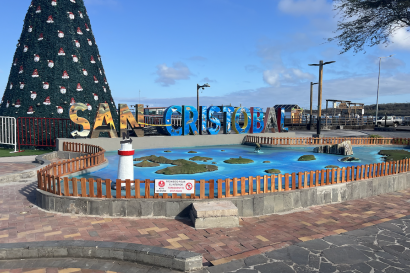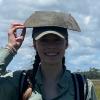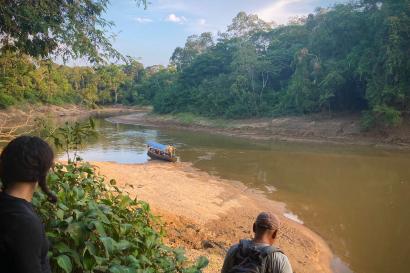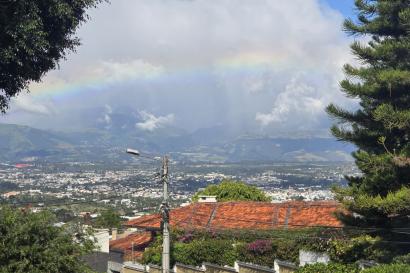
When I first entertained the idea of studying abroad in Ecuador, I had no idea what to expect. What would my routine look like? How would I get to school? What would the classes be like?
To help answer these questions, I’ve chronicled a typical “day in the life” while studying abroad in Quito, including some tips and things I’ve learned along the way. An important note: some of the information in this post is specific to the Quito Summer - Environmental Studies program. Full-semester and direct-enrollment programs will look a little different than this.
Also, when I move to the Galapagos for the second half of my study abroad program, I’ll make a second day in the life post about San Cristobal, so stay tuned!
And now, without further ado, A Day in the Life: Quito Edition…
6:45 a.m.- Get up
This is way earlier than I usually get up during the school year, but after only a week, I now naturally wake up before 6:45 a.m.
7:00 a.m.- Breakfast with my host family
Breakfasts in Ecuador tend to be larger than they are in the US. My host parents typically prepare some form of egg, a bowl of fruit, bread, and juice. Some of my classmates have something similar, while others eat yogurt or oatmeal instead.
8:30ish a.m. - Walk to USFQ or Paseo San Francisco
I live only a 10 minute walk from USFQ, so I walk there by myself most days. About half of my classmates also commute by walking, while the others either take the bus, Uber, or get a ride from host parents who work on campus.
Walking alone was scary for me at first, but after a few days I became more confident – not complacent, but confident. Here are my suggestions to make sure you have a safe commute:
- Stay alert. Be aware of your surroundings.
- Cross the street carefully. In Ecuador, pedestrians don’t have right of way, even in crosswalks. Every time you cross the street, treat it like you are jaywalking in the US.
- Keep valuables secure. When I’m walking, I don’t keep my phone or wallet in my pants pockets. Instead, I put my phone in my backpack, buried under my other things. My wallet and keys go in my backpack’s outer anti-theft pocket that sits snugly against my back. Once I get to USFQ, I dig my phone out and return it to my pants pocket.
- Wear sun protection. Even on cloudy days, a hat, sunglasses, and sunblock are a must at 9,000 ft.
- Beware wet cement. Sincerely, someone who has nearly stepped in it on multiple occasions.
- Walk confidently. A 2013 study found that predators often choose their victims based on their gait (Book, Costello, and Camilleri). Walk with your natural stride, stand tall, and stay alert. Using confident but relaxed body language gives the message that you will not be an easy target.
In addition to the main entrance with the drop-off loop, USFQ also has an entrance on its south side. The south entrance is accessible from the street, or via a pedestrian bridge connected to the nearby mall, Paseo San Francisco. The USFQ side of the mall, accessible with your USFQ ID, has a bookstore, student union, auxiliary library, and some offices and classrooms. I typically go to Paseo San Francisco in the morning, then use the bridge to get to USFQ for my afternoon class.

9:00 a.m.- shop, study, write, and/or relax
This is the time slot for the Ecuadorian Ecosystems class – yes, all three hours. It’s a long time to be in a lecture, but thankfully there’s a coffee stand on the way to the classroom in case you need some caffeine.
I am not in the ecosystems class, so I usually start my day at Paseo San Francisco. I do whatever shopping I need to do, or study/chill at the auxiliary library in the mall. The mall library is the quiet library – anybody working on group projects will be at the main library instead. Note: before you leave the library, a security guard will ask to inspect your bag. Don’t worry, this is the standard protocol. Just unzip your backpack, let the guard look inside, then you’ll be on your way.
At around 10 a.m. or 11 a.m., I cross the pedestrian bridge into USFQ. Before you enter, make sure to have your USFQ ID on hand – you’ll need to show it to the security guard as you walk inside. Upon entering, I meet up with a classmate who also has no morning classes. We usually sit at a table outside, and either review for our Spanish class or work independently. Sometimes we’re visited by hummingbirds while we study.



12 noon - lunch with all my classmates
After the morning class gets out at noon, everyone in my cohort meets up for lunch. Some days, we eat at the food court in Paseo San Francisco. Generally, a meal there costs around $6. There is a variety of restaurants to choose from; you can get burgers, pasta, ramen, crepes – pretty much whatever you’re hungry for. Afterwards, there’s sometimes enough time to run errands at other shops in the mall.
There are also some restaurants on campus and one on the USFQ side of the mall. These typically cost around $6.
On days when we're feeling adventurous, we look for other restaurants within walking distance of campus. Some offer full sit-down meals, usually consisting of a fruit juice, the soup of the day, and then a main dish. This main dish is sometimes called a seco (“dry”), because it is served after the soup. The pictures below are from Cumbay & Co, which is about a five minute walk from USFQ. We all got soup and a main dish for only $3 each! (Google says this place is closed. As of the publication of this post, Google is a liar).


2:00 p.m. - Spanish class
After lunch, we head back to campus for Spanish class. All of our classes are located in Casa Carona, a little building in the northeast corner of campus. It used to be somebody’s house (hence the name), then the university purchased it and converted it into the exchange students building.
The intensive Spanish courses definitely live up to their name. In order to cover a semester’s worth of material in only four weeks, they need to move very quickly. Classes last three hours, and often include several different topics in one class period.
I’m in the advanced Spanish class with Professor Lasso. That class usually starts with a discussion (in Spanish, of course) on a heavy topic like “what it means to work” or “man’s connection to nature.” Sometimes instead of a discussion, we have a debate about something – our most recent one was on whether or not freedom of speech actually exists. After that, we review a specific grammar concept, such as passive voice or subjunctive mood. Then, we end the class by watching a video or documentary and having a discussion about it.


3:30ish p.m. - break time!
About an hour and a half into the class period, the prof gives us a 20 minute break, which we usually spend going for a short walk outside to stretch our legs. At this time of day, you can often see a rainbow if you look to the east.

5:00 p.m.- get out of class, chill with classmates at USFQ for a bit
After a three hour class period, everyone’s brains are melted. We usually chill next to the pond for a little while before heading home.


5:30 p.m. - walk home
This close to the equator, you get almost exactly 12 hours of sunlight per day. The sun sets at around 6:15pm in the summer, which means you need to start walking home fairly early to avoid being out after dark. On the way home, I usually walk with one of my classmates who lives nearby.
5:45 p.m.- free time!
By the time I get home, I usually don’t have much energy left. I use my free time primarily for napping or watching TV, but also for homework or laundry as needed.
7:00 or 8:00ish p.m.- Dinner with host family
My host family tends to have dinner fairly late due to everyone’s work schedules. Dinner at my host home typically is some combination of rice or potato, a veggie or salad, and some kind of meat or fish. Accompanied, of course, by a glass of juice.
Dinner conversations are an integral part of my routine back home, so I tend to stay at the table and talk, even after I’ve finished eating. Speaking Spanish in the evening tends to be a bit more difficult for me than it is in the morning. I try my best, but sometimes it takes a while to figure out how to say things.
9:00 p.m.- get ready for bed, then sleep
Every day, I tell myself I’m going to watch a bit of a show before I go to bed. And every day, by the time I’m finished showering and brushing my teeth, I’m too sleepy for even one episode.
In my case, studying abroad is a demanding experience, but certainly a rewarding one, too.
Editor’s Note: Student Health & Safety is our number one priority at IES Abroad. Our highly trained crisis management team both at our headquarters in Chicago and on-site are monitoring situations on the ground should they arise. If you have any questions or concerns about health and safety while abroad, please contact the staff at your Center abroad. Students with questions about health and safety before they depart should contact the Dean of Students Office at 800.995.2300.
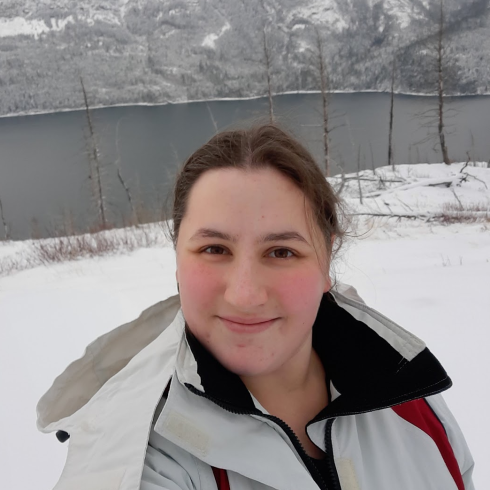
Teagan Serink
Salutations! My name is Teagan Serink. I’m a junior at the University of North Texas, where I’m studying music, technical communication, and Spanish. I enjoy singing, birdwatching, and herping. This summer, I’ll be studying ecology in Quito, Ecuador!




